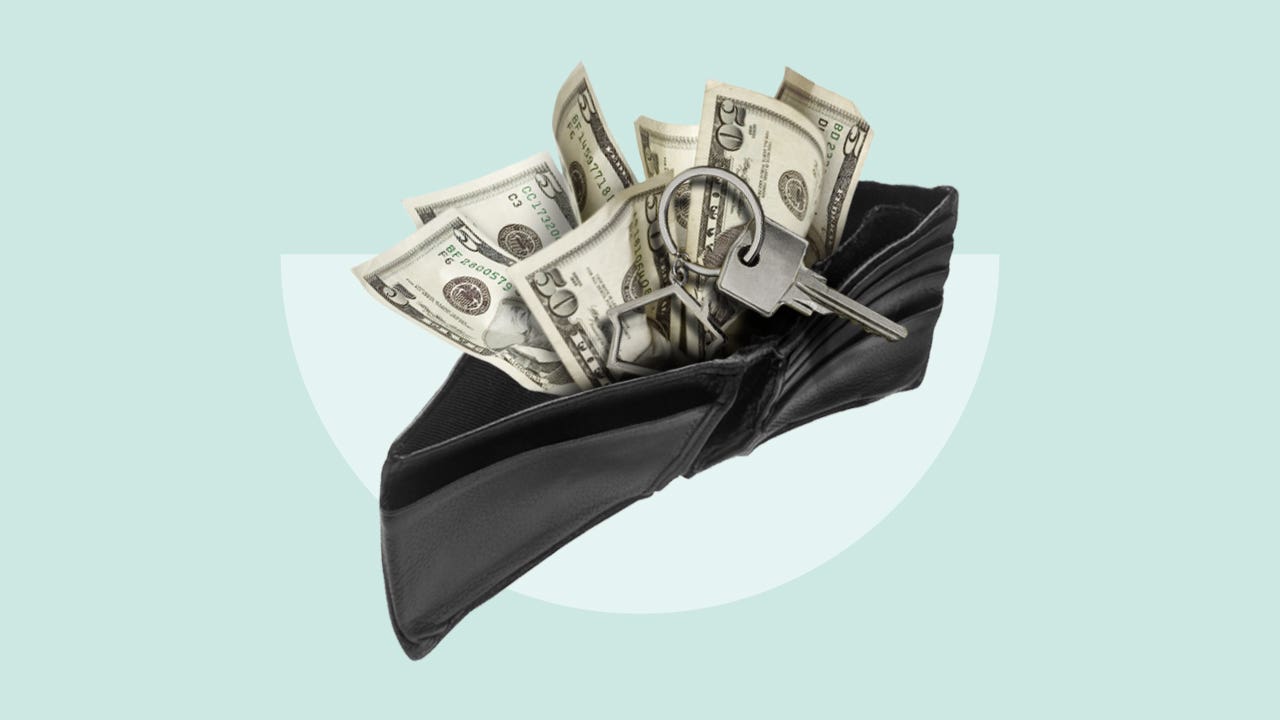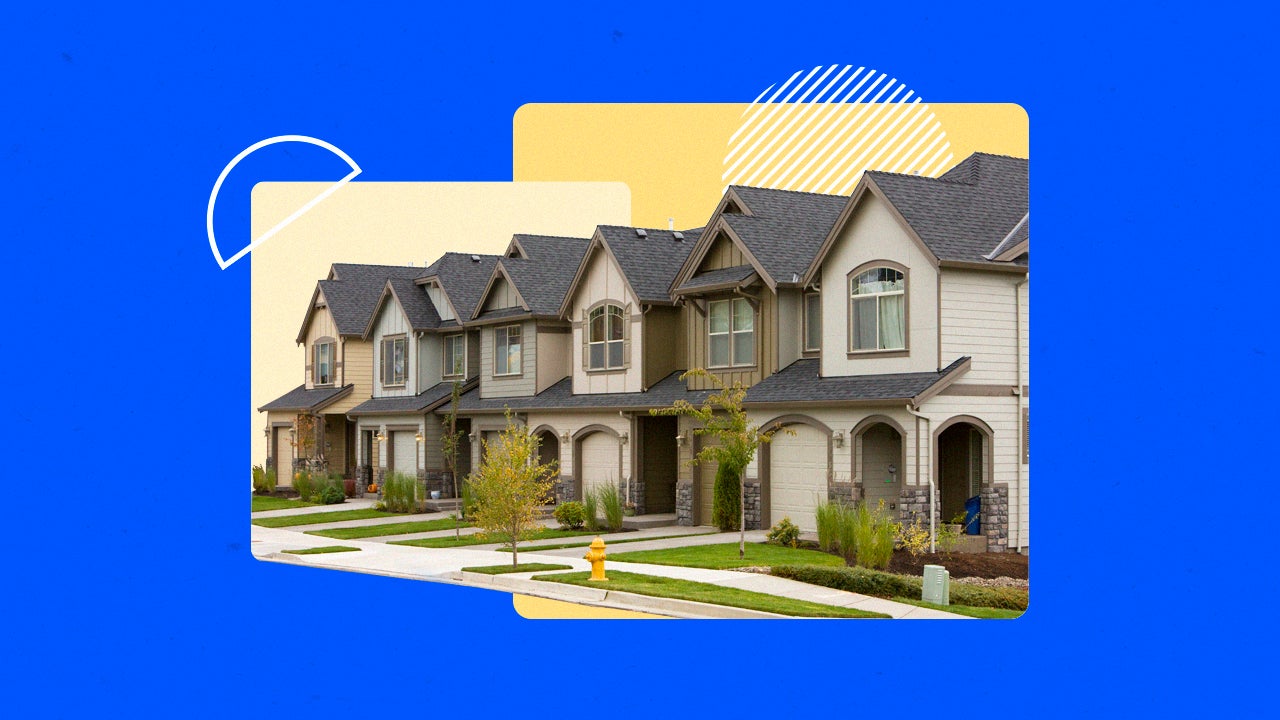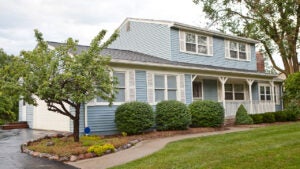Study: Typical single-family home costs over $18,000 per year in hidden expenses




Key insights
- The average annual cost of owning and maintaining a single-family home in the U.S. is more than $18,000 a year — 26 percent higher now compared to four years ago, according to a new Bankrate study.
- Single-family homeowners in pricey states like California, Hawaii and New Jersey now pay more than $25,000 a year in ownership and maintenance costs.
- The lowest-cost states for homeowners include Arkansas, Kentucky and Mississippi.
Cost of owning and maintaining a home soars to over $18,000
Homeownership is a cornerstone of the American Dream and an important way for many to build wealth, but the ongoing costs extend way beyond the table stakes of buying a home.
In a market where median home prices have climbed above $400,000 nationally, the average annual cost of owning and maintaining a single-family home in the U.S. is 26 percent higher now compared to four years ago, according to Bankrate’s new Hidden Costs of Homeownership Study.
To determine average hidden homeownership costs nationally and in every U.S. state, Bankrate factored in the average cost of property taxes, homeowners insurance and 2% of the median sales price of single-family homes to account for maintenance and repair costs. We also included energy, internet and cable bills and adjusted figures for property taxes, energy, internet and cable bills and homeowners insurance premiums for inflation.
We found that the tab adds up to $18,118 a year for a typical single-family home (valued at $436,291, according to Redfin) in all 50 states. Nationally, that is an additional $1,510 per month on top of a mortgage payment.
In 2020, those same expenses totaled $14,428 annually for a typical single-family home, equivalent to $1,202 per month.
Why are homeownership and maintenance costs higher now?
Everything has gotten more expensive in the past four years. Home prices are up 40 percent since the beginning of the pandemic. In March 2020, the median price of an existing home was $280,700, according to the National Association of Realtors. By March 2024, that figure was $393,500.
Consumers are also contending with the after-effects of pandemic-driven inflation. Prices overall are well above their 2020 levels, and dollars don’t go as far as they did a few short years ago. From March 2020 to March 2024, cumulative inflation amounted to 21 percent, according to the U.S. Bureau of Labor Statistics.
Insurance costs are another factor squeezing homeowners. Annual premiums have been soaring, driven by rising home values, increasing construction costs and natural disasters.
States with the most expensive homeownership costs
These are the states with the highest costs of homeownership:
- Hawaii. With an average annual cost of $29,015, Hawaii is an expensive place to own a home. Much of the tab stems from high home values. With a typical single-family home price of $993,000, applying our estimated maintenance costs of 2 percent of the home’s value leads to a hefty $19,860 per year. The other factors contributing to ongoing costs: average annual property taxes of $3,724; average annual homeowners insurance of $1,455; average annual cable and internet costs of $1,508; and average annual energy bills of $2,468.
- California. The Golden State is another place where ongoing costs are inflated by home values. The median single-family sale price in March was $848,300, which means maintenance costs of $16,966 a year. Homeowners in California also pay average annual property taxes of $6,832, average annual homeowners insurance of $1,572, average annual cable and internet costs of $1,434 and average annual energy bills of $1,986. The total annual tab: $28,790.
- Massachusetts. Massachusetts property taxes are a big lift — the typical bill is $7,413 — and single-family home prices are high. At a median sale price of $624,200, you get estimated home maintenance costs of $12,484. Homeowners insurance is also pricier than average, at $1,918 a year, typically. Meanwhile, homeowners in this state pay $1,557, on average, in cable and internet costs, plus an average $2,941 in energy bills, per year. Taken together, Massachusetts homeowners can expect $26,313 in hidden costs.
- New Jersey. Garden State property taxes average $10,026 a year, the highest in the nation. Single-family home prices are a median of $502,400, translating to maintenance costs of $10,048. Homeowners insurance costs an average $1,466 a year, while annual cable and internet and energy bills run an average $1,594 and $2,439, respectively. Overall, New Jersey homeowners face $25,573 in stealth expenses.
- Connecticut. Another state with high property taxes, Connecticut homeowners pay an average of $8,073 per year. Single-family home prices aren’t as high — the median of $435,900 leads to annual costs of $8,718, just below the national average. Along with annual cable and internet costs averaging $1,508, annual energy bills averaging $3,367 and annual homeowners insurance averaging $1,850, homeowners in Connecticut typically spend $23,515 in hidden costs.
While average hidden costs of homeownership are up 26 percent nationally, the three states with the biggest percentage increases from 2020 to 2024 are Utah (up 44 percent), Idaho (up 39 percent) and Hawaii (up 38 percent). Utah and Idaho had large jumps in home prices during the pandemic, and home values are the biggest driver of our estimates.
States with the least expensive homeownership costs
These are the states with the lowest costs of homeownership:
- Kentucky. With an average annual cost of $11,559, The Bluegrass State is the least expensive place to own a home. This is largely a function of affordable home values. With a typical single-family home price of $255,800, the 2 percent rule of thumb equates to $5,116. The other ongoing costs: average property taxes of $1,547 a year; average annual homeowners insurance costs of $1,380; average annual energy bills of $2,216; and average annual cable and internet costs of $1,300.
- Arkansas. Arkansas is another place where ongoing costs stay in check thanks to modest home values. The median single-family sale price in March was $249,300, which means maintenance costs of $4,986 a year. In addition, homeowners in Arkansas typically pay average annual property taxes of $1,292, average annual energy bills of $2,309 and average annual homeowners insurance of $1,805. The state also comes with average annual cable and internet costs of $1,300 — the same as Kentucky. The total annual tab: $11,692
- Mississippi. Homeowners here catch a break because of affordable prices. With a median single-family sales price of $242,500, maintenance comes out to $4,850 a year. The state’s property taxes average just $1,380 per year, while annual energy bills average $2,263 and annual cable and internet costs average $1,410. Still, homeowners insurance is pricier than average, at $1,978 a year. The total expense is $11,881.
- Alabama. The picture here is similar to other affordable states: Alabama’s median single-family sales price of $271,800 works out to estimated maintenance costs of $5,436. The state’s annual property taxes aren’t as high, at $1,075, but annual homeowners insurance is above-average, at $1,804. Meanwhile, annual cable and internet costs average $1,447 and annual energy bills average $2,497.
- Indiana. Indiana’s more affordable single-family median of $252,900 equates to annual maintenance costs of $5,058, and homeowners insurance is just $1,185. On a yearly basis, homeowners in the state pay an average $2,063 in property taxes, an average $1,422 in cable and internet costs and average $2,531 in energy bills. In all, Hoosiers can expect $12,259 in hidden costs.
Alaska, Texas and Louisiana had the smallest percentage increases from 2020 to 2024 in hidden homeownership costs, with Alaska and Texas both experiencing a 14 percent increase and Louisiana showing 15 percent.
Summary: Homeownership and maintenance costs by state
| State | Average annual hidden homeownership costs, 2020 | Average annual hidden homeownership costs, 2024 | Dollar difference, 2020 vs. 2024 | Percent difference, 2020 vs. 2024 |
|---|---|---|---|---|
| Alabama | $9,878 | $12,258 | $2,380 | 24% |
| Alaska | $16,000 | $18,291 | $2,291 | 14% |
| Arizona | $12,385 | $16,373 | $3,988 | 32% |
| Arkansas | $9,286 | $11,692 | $2,406 | 26% |
| California | $21,845 | $28,790 | $6,945 | 32% |
| Colorado | $15,781 | $21,038 | $5,257 | 33% |
| Connecticut | $18,996 | $23,515 | $4,519 | 24% |
| Delaware | $11,365 | $14,785 | $3,420 | 30% |
| Florida | $14,435 | $19,182 | $4,747 | 33% |
| Georgia | $12,199 | $16,035 | $3,836 | 31% |
| Hawaii | $20,964 | $29,015 | $8,052 | 38% |
| Idaho | $11,667 | $16,197 | $4,530 | 39% |
| Illinois | $13,796 | $16,205 | $2,408 | 17% |
| Indiana | $9,673 | $12,259 | $2,586 | 27% |
| Iowa | $10,131 | $12,448 | $2,317 | 23% |
| Kansas | $11,989 | $14,012 | $2,023 | 17% |
| Kentucky | $9,192 | $11,559 | $2,367 | 26% |
| Louisiana | $10,951 | $12,593 | $1,642 | 15% |
| Maine | $12,919 | $17,110 | $4,191 | 32% |
| Maryland | $16,019 | $19,712 | $3,694 | 23% |
| Massachusetts | $20,564 | $26,313 | $5,749 | 28% |
| Michigan | $11,020 | $13,235 | $2,215 | 20% |
| Minnesota | $13,518 | $16,217 | $2,700 | 20% |
| Mississippi | $9,966 | $11,881 | $1,914 | 19% |
| Missouri | $10,344 | $12,639 | $2,295 | 22% |
| Montana | $13,249 | $18,081 | $4,832 | 36% |
| Nebraska | $11,647 | $14,946 | $3,299 | 28% |
| Nevada | $12,717 | $16,636 | $3,919 | 31% |
| New Hampshire | $18,063 | $23,256 | $5,193 | 29% |
| New Jersey | $20,421 | $25,573 | $5,152 | 25% |
| New Mexico | $11,087 | $13,533 | $2,446 | 22% |
| New York | $18,314 | $22,807 | $4,494 | 25% |
| North Carolina | $11,199 | $14,647 | $3,447 | 31% |
| North Dakota | $11,129 | $13,375 | $2,247 | 20% |
| Ohio | $10,585 | $12,975 | $2,390 | 23% |
| Oklahoma | $10,175 | $12,642 | $2,468 | 24% |
| Oregon | $15,519 | $19,221 | $3,701 | 24% |
| Pennsylvania | $12,449 | $14,983 | $2,535 | 20% |
| Rhode Island | $17,378 | $21,994 | $4,616 | 27% |
| South Carolina | $11,399 | $15,065 | $3,666 | 32% |
| South Dakota | $11,301 | $14,581 | $3,280 | 29% |
| Tennessee | $10,758 | $14,662 | $3,904 | 36% |
| Texas | $15,761 | $18,036 | $2,275 | 14% |
| Utah | $13,324 | $19,137 | $5,813 | 44% |
| Vermont | $15,365 | $19,836 | $4,471 | 29% |
| Virginia | $14,406 | $17,647 | $3,241 | 23% |
| Washington | $17,647 | $23,365 | $5,718 | 32% |
| West Virginia | $9,444 | $12,656 | $3,212 | 34% |
| Wisconsin | $11,514 | $14,508 | $2,994 | 26% |
| Wyoming | $12,308 | $15,420 | $3,111 | 25% |
| United States | $14,428 | $18,118 | $3,689 | 26% |
-
Bankrate’s Hidden Costs of Homeownership Study analyzes the average annual expenses associated with owning and maintaining a single-family home nationwide and in every state in 2024 compared to 2020. Bankrate defines those expenses as costs that go beyond a mortgage, including property taxes, homeowners insurance, energy costs, internet and cable bills and home maintenance.
Average annual nationwide and statewide home maintenance costs were estimated using the 2 percent rule of thumb multiplied by national and statewide median sale prices for single-family homes as of March 2020 and March 2024. Bankrate accessed Redfin’s national and statewide median sale price data for single-family homes as of March 2020 and March 2024 on May 1, 2024. Average annual national and statewide electric bills, which include electricity, natural gas, propane and fuel oil or kerosene costs, were collected using 2020 data from the U.S. Energy Information Administration. Average annual national and statewide internet and cable bills were collected using 2021 and 2023 data from bill payment company Doxo. Average annual national and statewide property taxes were collected using 2020 and 2022 data from ATTOM, a provider of nationwide property data. Bankrate used national and statewide 2020 and 2021 data from the National Association of Insurance Commissioners (NAIC) to aggregate average annual homeowners insurance premiums.
To accurately determine hidden homeownership expenses in 2024, Bankrate adjusted the most up-to-date national and statewide figures for property taxes, energy costs, internet and cable bills and homeowners insurance premiums for inflation using the Consumer Price Index. In the 2020 portion of the analysis, national and statewide 2021 figures for internet and cable were converted to 2020 dollars using the Consumer Price Index. Bankrate’s study did not include mortgage payments or any other monthly expenses or debts.
You may also like

Cheapest housing markets in the U.S.

What are the costs of owning a home?



